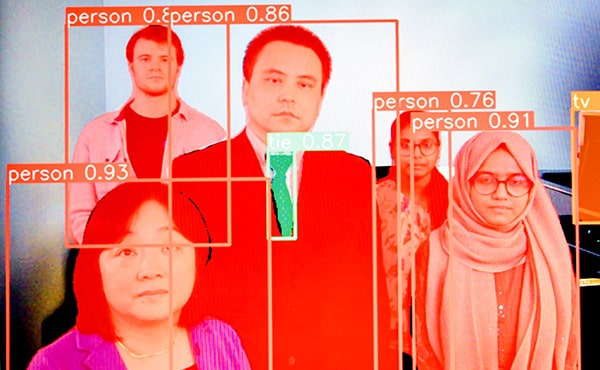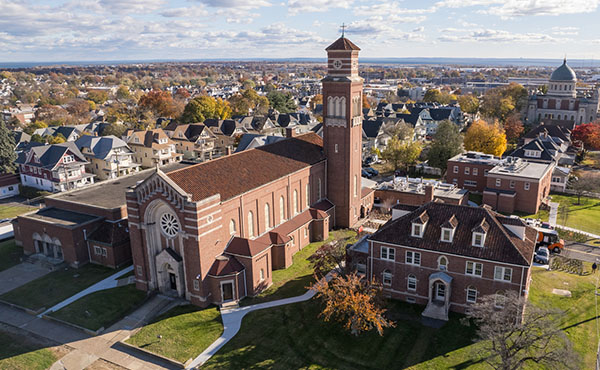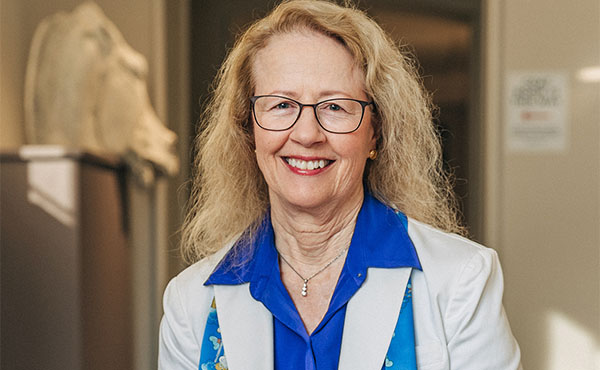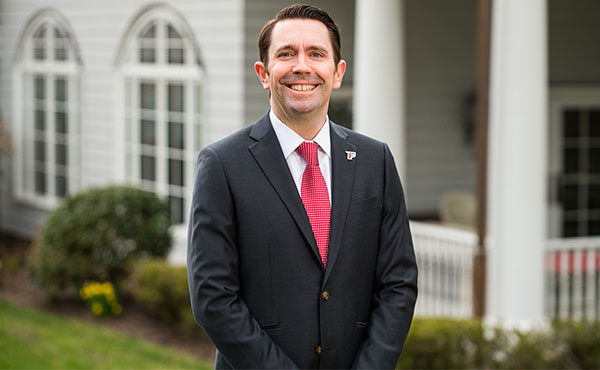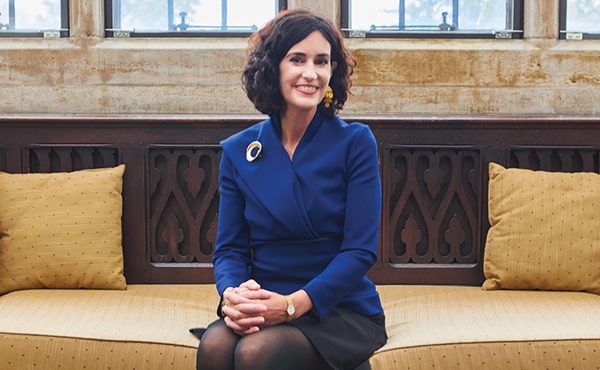Funded as part of a $1.3 million grant, engineers are exploring the future in Fairfield’s new AI Lab.
I think that everyone should learn at least the fundamental concepts of AI. Not just theoretically but also practically, through specific hands-on activities.
— Mirco Speretta, PhD, Director of Cybersecurity and Data Science
Bright red colors are being projected onto the wall as a group of graduate students — alongside professor and chair of computer science Xiaoli Yang, PhD, and assistant professor of computer science Sidike Paheding, PhD — study the patterns before them.
What they are a looking at is, in fact, themselves — an AI-enhanced computer is tracking their movements in relation to things in the room. The goal of their object detection exercise is to improve the accuracy, speed, and reliability of AI systems. Computer vision tasks such as this produce data that enables researchers to program robots to better navigate their environments and interpret human actions.
Dr. Paheding’s research in the new $125,000 AI Lab focuses on computer learning and is part of the School of Engineering and Computing’s ongoing artificial intelligence studies. His analysis of how computers can learn on their own, similarly to humans but using data rather than emotions, is “all about teaching computers to recognize patterns and make decisions based on what they ‘see,’ whether it’s identifying patterns in health data or detecting a cyber threat,” he said.
Fairfield’s AI Lab was launched with the mission to accelerate AI research and education on campus, and is outfitted with high-performance computers affixed to the walls, cameras and imaging technology for real-time computer vision tasks, robotics for autonomous systems, 3D printers and prototyping tools, and other state-of-the art technology.
The dedicated lab offers space to conduct research and capstone projects, and gives students access to high-performance computers to gain knowledge of AI concepts such as machine learning, neural networks, natural language processing, and computer vision.
“These hands-on activities help students to comprehend how AI techniques can be used and in what areas they can be applied,” said director of cybersecurity and data science Mirco Speretta, PhD. “In the AI Lab, students are able to process big amounts of data and evaluate models.”

Fairfield’s new AI Lab will accelerate AI research and education.
Dr. Yang, recent recipient of a $469,995 grant from the U.S. National Science Foundation, is developing the first game-based semiconductor incorporating AI and ChatGPT, to guide high-school students. Her research is part of a larger $1.3 million multi-institutional project grant, in partnership with the University of Maine and Southern Methodist University. Project goals are to help high school students develop skills and knowledge of the semiconductor field, through an innovative game-based learning platform, hands-on activities, and industry field trips.
The field of AI has grown exponentially over the last few years. When thinking about artificial intelligence, the image of artificial cyborg-like beings that think and look like we do — and take all our jobs — may come to mind. But Dr. Paheding dismisses this idea. “In reality, these systems operate through complex algorithms underpinned by advanced mathematics. The systems lack self-awareness and emotion,” he explained. “It’s true that while AI can automate certain tasks currently performed by humans, this does not equate to an immediate replacement of human workers. In fact, the integration of AI into various sectors can potentially create new job opportunities.”
While it may be true that AI won’t completely replace us, it is nevertheless also true that AI has become an industry disrupter. Offering speed and efficiency through technology, generative AI tools have been shown to increase work productivity across a variety of domains including healthcare, transportation, cybersecurity, surveillance, e-commerce, and more. “This phenomenon mirrors the internet boom of the 1990s,” Dr. Paheding said. “Although the internet did replace some jobs, it also generated numerous new opportunities for employment.”
As AI continues to grow, so will its impact on our lives — in everyday tasks such as adjusting the brightness of a cell phone screen, and in lifesaving situations such as detecting early cancer from a series of images. “For this reason,” said Dr. Speretta, “I think that everyone should learn at least the fundamental concepts of AI. Not just theoretically but also practically, through specific hands-on activities. Students should be able to understand which techniques should be used in which context. They should be able to judge whether an AI system does not include potential bias.”
